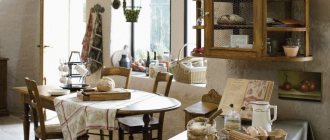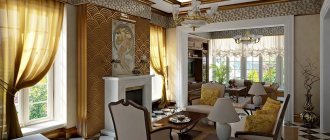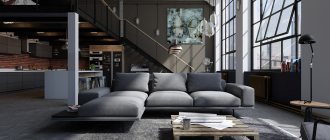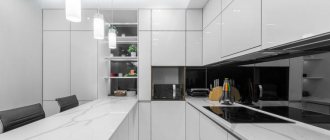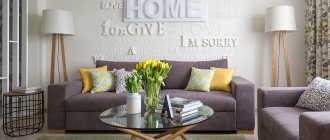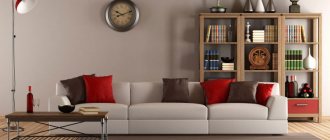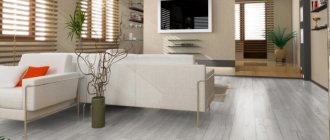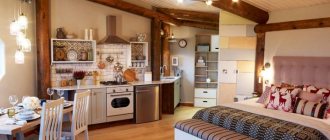Victorian style is a classic gem. It originated in the early 19th century in England, combining the most contrasting exotic and new historical design trends.
Despite all the pretentiousness and atmosphere of the premises, Victorian mansions remained cozy. This combination was achieved thanks to certain design rules and certain decorative elements
Color solutions
The early Victorian period was characterized by rich shades of precious metals and stones: ruby, burgundy and gold were sure to fill any interior. The mid-period palette is softer and more elegant, ranging from sand and light beige to dark wood tones.
Deconstructivism returned bright colors to the design. Then shades of azure, blue, green, and orange were added to the tones of precious stones.
Figures
- Joseph Paxton. The humble greenhouse engineer created his most ambitious project, commissioned by the organizers of the First World Exhibition. The Crystal Palace surprised the public with its concept of respect for the environment, simple but effective layout and the use of completely unusual materials in construction.
- Sir Charles Barry. The restored Palace of Westminster, complete with the Big Ben tower, brought fame to the architect and London in the future.
- Augustus Welby Northmore Pugin. The architect became famous for his reconstruction of Nottingham Cathedral and his assistance in the design of the Parliamentary Buildings.
Floor and ceiling finishing
A mansion in the Victorian style required finishing the floors of the rooms with parquet, and laying light carpets decorated with flowers on top. In corridors and rooms with high humidity, tiles with overseas patterns were installed instead of parquet.
The ceiling was decorated with exquisite stucco, decorated with transverse beams made of expensive wood, and caissons.
Today, designers prefer simple and flat ceilings in light colors. Instead of stucco, they are decorated with carvings on the cornices, always in a contrasting shade.
It is permissible to replace parquet with laminate or linoleum imitating expensive wood.
How to furnish a room in Victorian style
Tables, armchairs, bureaus, bookcases and other wooden furniture do not have to match each other exactly in color, texture or even style. This is the complexity and power of Victorian interiors, in which every object looks as if it has its own story. Some recommendations for choosing furniture:
- give preference to noble shades and types of wood (or high-quality imitation). No pine or birch. Choose walnut, mahogany, stained oak. Yes, this furniture is darker, but the luxurious tones and textures give the darkness depth - the room feels cozy rather than cramped;
- cabinets covering the entire wall (with or without open sections), wooden sideboards, complex dressing tables - this is good. Storage furniture should also participate in interior decoration; it does not need to be hidden or replaced with hidden sections;
- voluminous decorations and ornaments are also good. Exquisite geometry, flowers and fruits, complex classical patterns highlight the item, turning it into an independent piece of art;
- think about what furniture you need for a calm, relaxed pastime. Maybe the living room needs a low table for family games? Or do you not have your own reading area, so you read either on the living room couch or in bed? In Victorian England, a reading space was usually set up next to a bookcase, and every room contained everything needed for any kind of quiet activity.
When planning your interior, go beyond the usual. Find what you were missing in your life and bring it into your home. Shelves for displaying your collections and memorabilia, desks with many compartments, and library areas will not make you a sybarite. On the contrary: such an interior will help you find time for exquisite pleasures, for which for some reason you have always lacked it.
Wood is the basis of finishing
Victorian style in the interior requires an abundance of untreated wood. After all, in the 19th century varnish was not used. In addition to parquet on the floor, there were wooden panels for the walls, decorated with frames or patterns. They were placed on top of the wallpaper, covering part of the wall.
History of origin
The Victorian style did not arise in England out of nowhere - the necessary conditions were created for this. First of all, because it was the era of the maximum prosperity of the British colonial empire, and all the money, for obvious reasons, flocked to the metropolis.
It was at this moment that the well-being of modern Englishmen was laid - many of them, through the same military service, could achieve significant success and acquire a good mansion of their own, which had to be furnished. Many people had money, which means they had to spend it on a grand scale, imitating the family aristocracy.
And there was something to spend them on. Colonies around the globe supplied numerous unusual luxury items from overseas countries - for this reason, the Victorian style still allows for the mixing of stylistically completely different elements.
As of the 19th century, the Industrial Revolution had already taken place in England, which means that many household items began to be mass produced and sold at low prices.
In short, people, some of whom came from relative poverty, finally had the opportunity to live noticeably richer, and therefore in some places they pursued exemplary luxury.
Lighting
English mansions were literally filled with light under Queen Victoria. The lighting in the rooms was spot-lit since the light from the dim chandelier was not enough for reading or other tasks. It was complemented by the light of a table lamp or candlestick. Local lighting is still a characteristic feature of the style today. The chandelier in the center of the ceiling remains more of a formality than the main source of light.
At the same time, table lamps with magnificent shades gained popularity in England due to the development of trade. They were made by hand. The shaped bases were made of bronze, painted or inlaid with colored glass, ceramics or semi-precious stones. Lampshades were made from rich fabrics: silk, velvet, satin. Complemented with fringe with beads and embroidery. So lighting items in Old England became a real decorative element.
Kitchen
First of all, it is a large and strong table located in the center. This table will, of course, be illuminated by a large chandelier, accompanied by several lamps.
It is highly advisable to use calm tones on walls or furniture! Textiles on windows are unacceptable.
Decorations and decorative elements
For a long time, the British had the habit of collecting collections - a source of pride in front of their guests. Painted snuff boxes, caskets, porcelain or ceramic figurines, and clocks were displayed above the fireplace or on special shelves.
And with the expansion of the home decoration market, the British began to buy them. So the mansion of every wealthy person resembled a museum hall. Mirrors and picturesque paintings in carved wide baguettes also served to decorate the house.
But despite the flourishing of technological progress, some things did not go out of use. For example, forged candlesticks.
Living room
In England, they preferred to use this room only for a modest dinner at the table, with all members of the family (they did not really like to have strangers in their house), so the appearance of this room fully corresponded to its purpose.
A round table, soft beautiful chairs or sofas, well, where would we be without a candelabra in the center of the table? Only with him, in such a style solution, can you feel the comfort and tribute to fashion that was paid when creating this style.
So if you like to gather in a home with your family, or simply cannot imagine your life without a crackling fireplace in the living room, then if you have a certain amount of money and desire, this style is more than acceptable for you.
How to decorate a corridor with stone with your own hands: design ideas, photos
Imitation of natural stone made from modern finishing materials is suitable for interior decoration of a hallway. Artificial stone is made from gypsum or concrete, and keeps walls beautiful and attractive for a long time.
Decorating a corridor with stone with your own hands
Advantages:
- Resistance to mechanical stress - stone textures are imitated by ceramics, do not deform or rot.
- Fire resistance.
- The versatility of the style is beneficial for a classic interior design, it fits elegantly.
- The stones can be bent and cut, and can be painted in any color.
Decorating a corridor with stone with your own hands
- Environmental safety – natural materials are used in the production of decorative stone.
- Combination with lighting - by correctly placing lamps on the stone texture, the atmosphere in the room will change.
- Light weight - decorative stone is much lighter than natural stone and can be safely used in plasterboard structures.
- Affordable price - inexpensive, as well as cute and practical.
Decorating a corridor with stone with your own hands
A variety of variations - many options with interesting designs, the possibility of imitations with the addition of individual fragments.
This is a worthy finishing material, but you need to work with it with caution. In small hallways there is not enough space, so it is better to use fragmentary lining of door openings, windows, decorate corners, paintings on the wall, niches in the wall, on the floor above the baseboard, the place where shoes are taken off
The style of the corridor must also be taken into account.
Decorating a corridor with stone with your own hands
Artificial stone is produced in two versions:
- Concrete stone is easy to clean, you can repair the damage yourself, but there are also disadvantages - heavy, expensive, complex cladding (the need for special tools), installation experience is required.
- Gypsum stone - finishing of plasterboard structures, lightweight, inexpensive, color and texture options, disadvantages - subject to damage, cannot be rubbed when cleaning.
There are several options for the design of artificial stone:
Decorating a corridor with stone with your own hands
- Sawn – unpolished front part, clear boundaries.
- Crushed - looks like marble, quartz, untreated rock.
- Rubble - like a pebble or boulder.
- Artificial brick.
- Finishing tiles are a polished material, like granite.
- Mosaic.
- Fantasy stone is an interesting design.
Decorating a corridor with stone with your own hands
It is not recommended to use several types of stone in the design of a water room. It’s better to vary the shade; you can always paint it any color.
Furniture for the interior of the hallway
A classic wardrobe with a pattern on the glass doors in the hallway.
Furniture plays an important role in shaping the design of a room. It is mainly made of natural wood. Sometimes you can replace valuable wood with high-quality MDF products that resemble oak, ash, alder, and beech in texture.
When furnishing the hallway, it is necessary to take into account the proportionality of shapes, the coherence of all interior components, and the combination of textures and colors. As a rule, the following pieces of furniture are placed in the hallway:
- It is preferable to choose a cabinet from good solid wood with solid hinged doors. A good solution would be to have a showcase that will help create a stylish design. Place classic wardrobes with a convenient corner configuration in a small hallway. Such a cabinet can become a rather original and stylish attribute if, instead of wood, mirror surfaces, glass with a photo print or a sandblasted pattern are used for the doors.
- The coat rack is a multi-functional piece of furniture and a stunning accessory. Truly impressive decor will be items with elegant forging, filigree, and openwork carvings. To add spice to the interior, designers come up with unusual forms of hangers.
- The hallway is a universal type of furniture, the hallmark of the corridor, in which you can place seasonal shoes, hang clothes on hooks or hangers, and put all kinds of little things. This kind of approach is perfect for those who want to save space. White French hallways in a classic style, which are of decent quality, proved to be ideal. They are the embodiment of luxury and majesty. Of course, this is an expensive pleasure, but worth it.
Built-in wardrobe in the hallway, interesting decor.
Furniture design specialists offer hallways made in the classic genre using a technique that makes it possible to use it for many years. They make a special, very strong internal treatment that is not afraid of mechanical damage.
The console in the hallway acts as an alternative to a table, which has two legs in front, and the back side is attached to the wall. A hall with such a table becomes unusual and royally luxurious. Consoles for hallways with mirrors are very popular; they can also be supplemented with a stool, lamp, or painting.
White chest of drawers and a wardrobe with glass doors in the hallway interior.
A mirror with carved legs in a wrought iron or wooden frame will create an elegant atmosphere and add a special atmosphere and charm. A chest of drawers is an indispensable piece of furniture in the hallway; above it you can hang original paintings, photographs, or a mirror. Chairs, armchairs, ottomans are usually arranged in pairs, because the design of a hallway in the classic style prefers proportionality, a proportionate background. A little imagination and taste when choosing furniture for the hallway in a classic style will transform not only the hall, but also the entire apartment.
conclusions
The concept of contemporaries about the prosperity of the nineteenth-century Englishmen still differs from the vision of the average tradesman who received sudden access to previously inaccessible benefits. An avalanche of new products swallowed up the suddenly rich middle class, reducing its ability to sense the edge of bad taste.
Reconstructors and restorers tried to recreate the best interior solutions, which can be clearly seen in modern living room designs in private homes. And the mechanisms and degradation of piecework adopted in the era of evolution are well reflected in high-tech style interiors. Designers use exclusively natural wood, select expensive fabrics, and avoid vulgar gilding and excess decorative elements. The standard compositions do not contain the favorite linoleum; the curtains lose the abundance of folds and the feeling of centuries-old heaviness.


